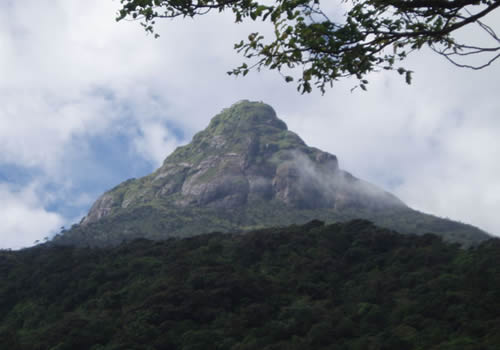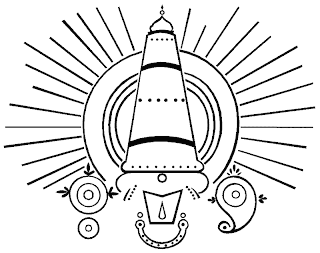Ramayan 3392 A.D. (formerly called Ramayan Reborn) is a comic book series published by Virgin Comics based upon the Ramayana. It is written by Shamik Dasgupta and the art is by Abhishek Singh, and a brainchild of Deepak Chopra and Shekhar Kapur. It features a re-imagining of the historical classic in a post-apocalyptic future.
The story primarily deals with the last kingdom of humans who are fighting demons (Asuras) to survive. The series' prime protagonist is the human prince Rama who, alongside his brothers, aims to bring down the demon-lord Ravan.
Plot summary
In the third age of mankind, the world, after a nuclear third world war, is divided into two continents, Nark and Aryavarta. In Aryavarta the last kingdom of humans exists inside a city called Armagarh.
The city is ruled by a council, the leader of which is a man by the name of Dashrath. His four sons, Rama, Lakshman, Shatrughan and Bharat are sent by the council to outposts of the kingdom to provide assistance. Rama and Lakshman go to the docile region of Fort Janasthan while Bharat and Shatrughan are dispatched to war-torn Khundgiri.
At Fort Janasthan, Rama and Lakshman are surprised to find a heavy regiment of Asuras attacking the fort. After sustaining heavy losses and injury to Lakshman, Rama barters with the enemy and surrenders so as to allow the Janasthanians safe passage while the Asuras destroy the Fort. This act angers the council who then plead with the gods that then subsequently punish Rama by banishing him into exile.
After Rama is exiled, the kingdom of Armagarh falls into disarray. Dashrath succumbs to his death while Lakshman finds himself having to deal with assassination attempts from rogue elements within the council that are aiming to cause an insurrection within the kingdom. In order to obtain support, he goes to Khundgiri to try and meet his brothers but on the way, he meets an old seer by the name of Vishwamitra who instead takes him to Rama. The seer, one of an exalted group of seven, convinces Rama (after showing him the vision of a devastated future) to follow him on a quest to a mythical city called Mithila.
Upon reaching the forests of Dandakaranya (a place near Janasthan), they are then told by an owl that the horde of Asuras that had destroyed Fort Janasthan had been busy fighting and slaughtering all the beasts of the region in the past few months. The Asuras, however, had also suffered equal losses and only a handful amongst them had survived. Rama and his fellow travelers then sprint towards Mithila in order to prevent further destruction.
At Mithila, they subdue the last remnants of the dispatched Asura force thus saving the princess of the region, a woman by the name of Seeta who is gifted with magical powers of nature. Vishwamitra states that it is to be Rama's role to act as a protector to this woman, a role that he refuses to take up. They are then attacked by three Asura warriors (who are actually three of Ravan's children). In the battle, the three warriors are killed thus earning the humans the ire of Ravan himself who then arrives to destroy Mithila. Rama, Lakshman and Seeta flee through a secret route while the king of the region, Janak, prepares to fight Ravan.
On the other hand a small faction of Armagarhian rebels led by the former prime minister Sumantra, aims to bring down the conspiracy revolving around the House of Suryavamsha (Rama's clan). The sons of Dashrath are being eliminated one by one, systematically. Rama is exiled, Lakshman on the run, and Bharat lost in the battles of Khundgiri. They find out the prime culprit Kalnemi, an Asura who is disguised as a councilor in Armagarh. Bharat is held in captivity deep below in the mines of Khundgiri. Sumantra, with his daughter and Shatrughan, release Bharat from his prison, and they all go to Armagarh to bring down Kalnemi and his cohorts. Kalnemi is killed by Bharat and the valiant prince assumes the role of the first King of Armagarh, dissolving the corrupt council. Bharat vows that he will bring back Rama and coronate him as the true king of Armagarh, until then he will rule over the great country.
The Review
The story has been retold with a fairly futuristic approach and yet a lot of old elements have been retained.
The future in the story is not a very optimistic future. There has been an apocalyptic war and the ecology was destroyed. Earth is surrounded by a radioactive haze and humans only live at Armagarh in the Aryavarta continent where they have managed to penetrate the haze and get some sunlight. In the other parts of Aryavarta live ‘anthropomorphic’ beings like Vanaras, Garudas and others.
To the south lies the continent of Nark, hellish in all senses as the name implies. Ruled by Ravana who is a creature spawned by the apocalypse and who seeks to establish his rule over the Aryavarta kingdom too.
The kingdom of Armagarh (not Ayodhya) which is ruled by Chief Councilor Dasarath who has four sons - Rama and Lakshmana from the deceased queen Kaushalya and Bharat and Shatrughan by Kaikeyi - the story tries to give a reason for Lakshman’s bonding with his blue-skinned elder brother, the reason being tied to blood relations. He is more hot-headed, outspoken and resentful of his step-mother and for his father’s lack of time.
Kaikeyi unlike the Kaikeyi of the traditional epic is no sullen queen in the kop-bhavan sulking. She is empowered as she is a councilor in the kingdom’s governing council. She is also quite a racist, believing the humans should not join forces with other beings.
It would be interesting to explore racism in the Ramayan 3392 AD setting. Would some parallels be drawn to today’s stratified society. That would actually be hopeful to expect from the comics. On the other hand the use of the word Kshatriyas for warriors and use of Aryavarta for the ‘civilized’ continent might actually reinforce caste and cultural stereotypes.
The story opens with the Armagarh council debating how to combat Ravan’s Asura army and it is decided to send the four sons to the outposts of the kingdom. Rama and Lakshman get posted to the comparatively ’safe’ place of Janasthan which is underdeveloped.
No sooner have they reached that they realise that the outpost is under attack by an army of Asuras led by Ravan himself.
The Critics
The graphics are a quite disappointing. For whatever reasons, close-ups of the protagonists do not convey the intensity of the story as much as the graphics of the landscapes do. With the exception of Lakshman, whose distinctive red markings on the face help in conveying his anger with his parents much more eloquently than his expressions.
The final full page graphic shows Ravan who looks more like a beast than his traditional ten-headed humanoid form.
The question that it leaves one with is - would Ravan be shown as unidimensionally as the artwork suggests - in future issues? One hopes not. Ravan’s character is the epic is wonderfully diverse and rich. Ramayan 3392 AD’s success would lie in making both Rama’s and Ravan’s character multidimensional and not caricatures like Ramanand Sagar’s teleserial.
Curiosity makes one looks forward to the rest of the story. Where would Sita come in? And everybody’s favorite monkey god, Hanuman? Does this Rama have divine nature and will it be revealed? And how will the stories be radically different from Ashok Banker’s series of Ramayana?
Ramayan 3392 has met with positive reviews from many sources, particularly for its original take on the epic, and artwork. However, some Hindu organisations feel the Ramayan should strictly follow the original version. They have urged the makers of Hollywood movie "Ramayan 3392 A.D." to stay true to the story and the spirit of the timeless epic.










